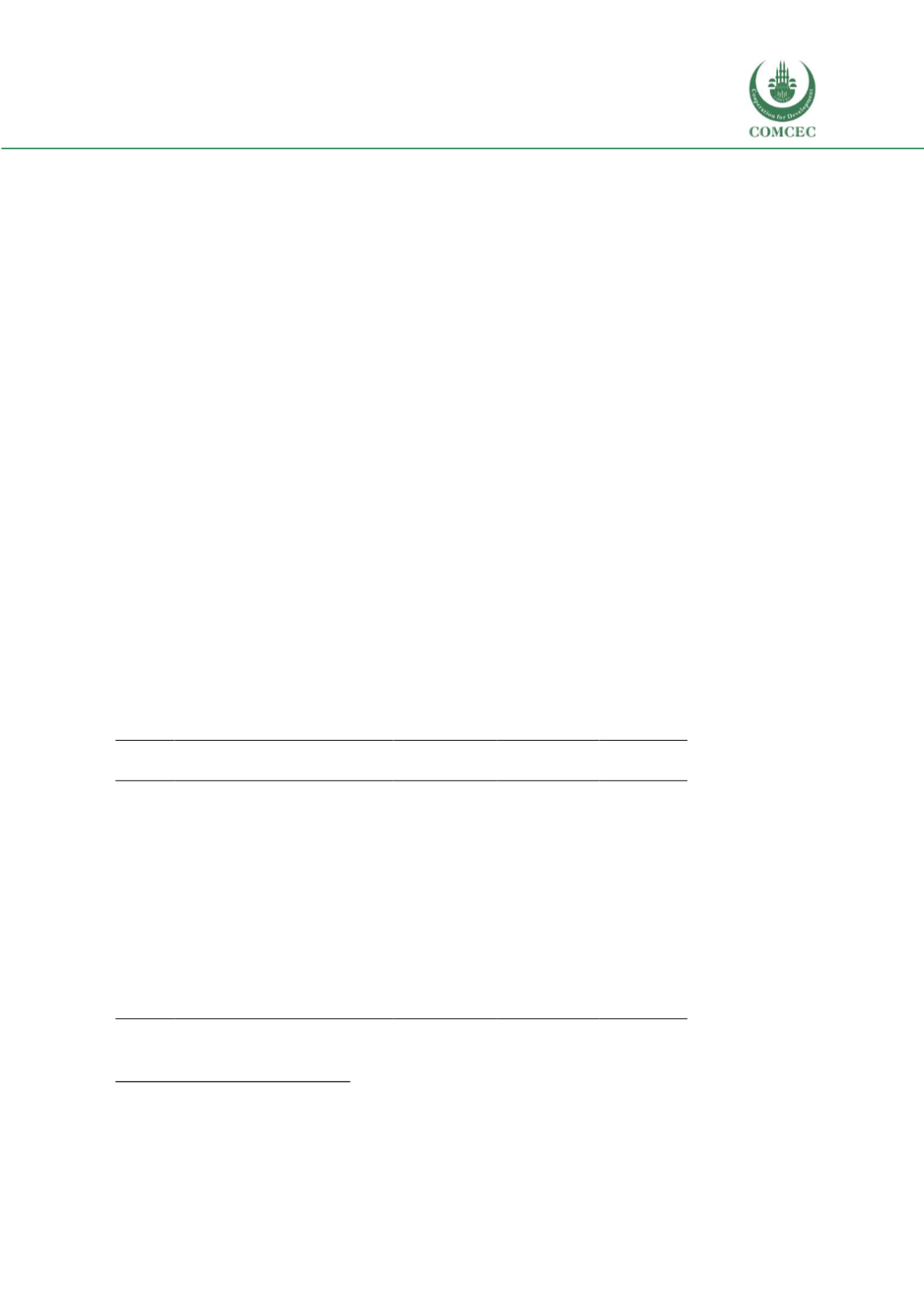

Education of Disadvantaged Children in OIC:
The Key to Escape from Poverty
155
of children under 5 presenting with stunted growth, high infant mortality for children under 5 at
81 per 1,000 live births, and large numbers of out of school children and high illiteracy rates.
Pakistan has been spending around 2.5-2.7% of its GDP on education over the last decades and
the delivery of its education services has been impacted in recent years by economic and social
challenges. For example, Table 1 shows that Pupil-Teacher Ratio (PTR) in primary education has
actually worsened and increased from 41.1 in 1990 to 46.3 in 2015, therefore factors such as
teacher recruitment and/or number of classrooms in schools have not kept up with the increasing
enrolment rates over time.
Administration:
The administrative units of Pakistan consist of four provinces (Balochistan,
Punjab, Sindh, Khyber Pakhtunkhwa), one federal capital territory (Islamabad), two autonomous
and disputed territories (autonomous Gilgit-Baltistan and disputed/autonomous Azad Jammu
and Kashmir). There are 6 tiers of government in Pakistan (1 Federal Government, 7
Provinces/Territories, 34 Division, 149 Districts, 588 Tehsil/Towns and finally several thousand
Union Councils).
Punjab is Pakistan's most populated province, with 56% of the country's population (over 90
million people) and a number of important cities. The province also has high levels of illiteracy
with over 3.8 million illiterates
412
. Sindh is the second most populous province which together
with Balochistan are the two poorest provinces. Balochistan contains a desert and a mountainous
region, making it the least densely populated province (see
Table 23)with implications for the
supply of schools. Khyber Pakhtunkhwa is the 3
rd
most populous province and has experienced
significant security threats affecting the education sector.
Table 23 Main regional administrative division in Pakistan
(population
413
, area, density)
Population
Area (km
2
)
Density
(per km
2
)
ICT
Islamabad Capital Territory
(federal)
1,151,868
906
1,271.38
BN
Balochistan (province)
13,162,222
347,190
37.91
KP
Khyber
Pakhtunkhwa
(province)
26,896,829
74,521
360.93
PB
Punjab (province)
91,379,615
205,344
445.01
SD
Sindh (province)
55,245,497
140,914
392.05
FATA
Federally Administrative Tribal
Areas
3,930,419
27,220
144.39
GB
Gilgit-Baltistan (autonomous)
1,441,523
72,971
19.75
AJK
Azad Jammu & Kashmir
(autonomous)
2,972,501
13,298
223.55
Source: Wikipedia “Administrative Units of Pakistan”
412
Rehman et al. (2013)
413
Year 2011
















